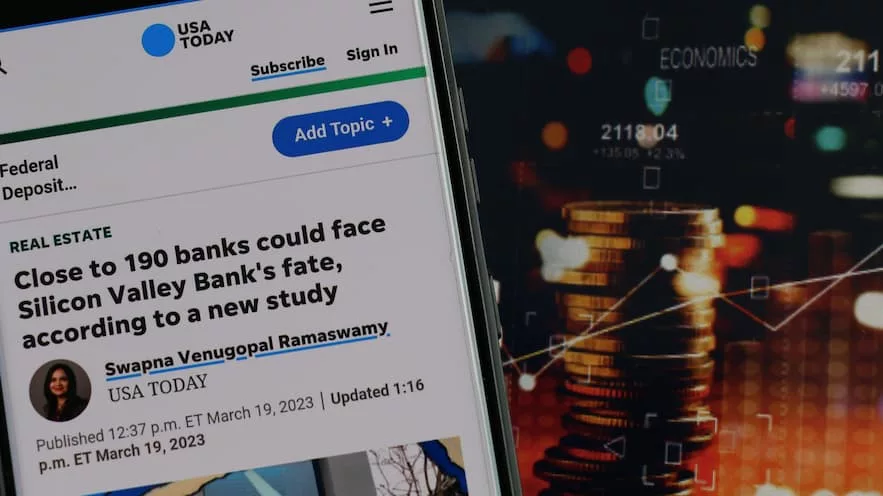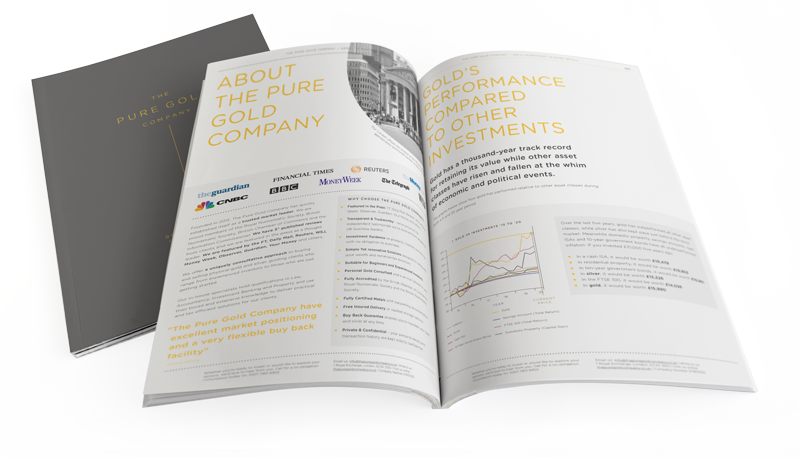In the last few months, we’ve seen a number of banks suddenly fail. This once again revealed the inherent instability of the banking system. In the fifteen years since the end of the Great Financial Crisis, we hoped that regulators and legislators had learned the important lessons and forced banks to become more responsible.
Yet here we are again.
To date, the U.S. experienced its second-largest bank failure ever when Silicon Valley Bank (SVB) collapsed on March 10. Just two days later, regulators seized New York’s Signature Bank, as well.
One week passed before Credit Suisse became the first global ‘systemically import bank’ to fail since the Great Financial Crisis. UBS Group accepted a CHF 100 billion from the Swiss National Bank to assume Credit Suisse’s liabilities.
The SVB record lasted less than two months before First Republic Bank failed on May 1, becoming the new second-largest bank failure in U.S. history. As this infographic shows, many more U.S. banks failed during the last financial crisis. Today’s bank crashes are significantly larger (and faster).

This matters as much here as in the U.S. and across the EU because the same forces are undermining banks worldwide. Here’s exactly what went wrong, and what’s at stake.
Banking is a confidence game
The title of this article isn’t a joke.
Fractional-reserve banking is a way to get society to take more risk, to transform risky investments into safe deposits. ‘Financial systems help us overcome a collective action problem. In a world of investment projects whose costs and risks are perfectly transparent, most individuals would be frightened,’ explains Steve Randy Waldman.
Banks take short-term deposits from savers and use their funds to finance long-term loans. The phrase ‘factional-reserve’ also means that banks lend more money than they actually have. How much more?
According to the Bank of England, £628 billion in total capital supports £2,940 billion in ‘risk-weighted assets.’ In other words, every £1 on deposit with a bank has been transformed into about £5 in loans – hence the ‘fractional’ in fractional-reserve banking. (This naive ratio doesn’t mirror reality exactly, but it’s a useful snapshot.)
The ‘reserve’ banks keep on-hand is just 8% according to the Basel III regulatory accord. So it is safe to assume there are £1 of real assets supporting every £12.50 of liquidity in the global financial system.
The difference between the amount of money on deposit and the amount of loans is called “credit.” That’s a polite way of saying “Money we don’t have but want to spend anyway.”
During economic booms, credit expands quickly – asset prices soar, everyone is making money and banks are happy to write loans. Soaring asset prices, we must remember, are mostly imaginary. Famous economist John Kenneth Galbraith coined the term bezzleto describe the ‘psychic wealth’ created during such periods.
It’s during periods of economic slowdown, when asset prices fall and psychic wealth evaporates, that those boom-time loans start to look like a bad idea.
When you make a loan to someone, you’re taking on counterparty risk – the chance that the borrower might not repay you. When you make a deposit at the bank, you’re also taking on counterparty risk, whether you know it or not…
This is exactly the reason deposit insurance exists.
Deposit insurance isn’t about your money, it’s about your trust
The Financial Services Compensation Scheme (FSCS) ensures every depositor at a UK bank with up to £85,000 per person. That’s obviously not enough for everyone, but more than enough to cover the average household savings of £76,000.
Here’s why that deposit insurance exists.
In times of crisis, depositors worry about the safety of their funds – for obvious reasons! Withdrawing your money from the bank, though, is problematic for the bank. Remember, your £1 finances £5 in loans – so asking for your money back puts pressure on the bank. They don’t have your money. They’ve taken your savings and used it to finance mortgages and business lines of credit.
But they can’t admit it. The worst thing a bank can say is, ‘Terribly sorry, but we can’t quite put our hands on your deposit at the moment. Could you come back tomorrow?’ We all remember how this scene played out in Mary Poppins, with queues around the block. (Although, today, the queues are virtual – and bank runs are much faster than they were in Victorian times.)
Asking for your money back makes the problem worse. So deposit insurance exists to make people feel safe even when they aren’t. Believing your money is safe might convince you to leave it in the bank, where it can go on financing loans you probably wouldn’t approve of.
Deposit insurance is meant to prop up the entire banking system, not the individual saver.
With that in mind, let’s address whether or not you should be concerned…
- One year ago, the Bank of England declared our largest banks were no longer ‘too big to fail’ (that phrase is yet another charming reminder of the 2008 global financial crisis). In other words, they could be allowed to collapse rather than leaving taxpayers on the hook for bailing them out.
That’s good news for taxpayers, and very bad news for HSBC, Lloyds and Standard Chartered. Such a statement makes the financial system more fragile.
- Let’s remember that FSCS insurance has never been tested. By the time it is, the economy would already be in dire shape… Furthermore, the FSCS is funded by the Bank of England. When a bank fails and deposit insurance is required, the BoE would simply print more money to make depositors whole.
While that’s comforting, it’s a cold comfort – because making more money doesn’t actually increase wealth. Anyone who understands basic economics knows that printing money causes inflation by essentially lowering the purchasing power of all pounds in the world.
Are more banks likely to fail?
In a word, yes. Here’s why.
Capital reserves. Banks in the UK (as well as the U.S. and EU) are legally required to invest some portion of their capital in sovereign bonds. When interest rates were low (during the pandemic, for example), these sovereign bonds have very low yields.
Why Buy Gold In 2024?
Discover how physical gold investment compares to other investment assets for growth and protection.

In order to fight the subsequent inflation, the UK, U.S. and EU central banks have raised interest rates – which lowered the market value of banks’ bond holdings. That directly reduces a bank’s capital reserves, and therefore how much they can lend…
This is the dynamic that led to the #2, #3 and #4 largest bank failures in U.S. history within a six-week period. And it’s not over… According to the Federal Deposit Insurance Corporation (FDIC) in the U.S. there are at least $620 billion in unrealized losses on banks’ balance sheets. At least they’re transparent about the size of the problem…
Speed of capital flight. Above we mentioned that today’s bank runs don’t usually involve around-the-block queues of anxious depositors. No, today capital flees via smartphone or website – without warning.
In the modern day, banks can go from healthy to insolvent in a single day.
So what should we do?
First and foremost, make certain any cash you have on deposit at the bank is well within the insurance cap. If you’re fortunate enough to have over £85,000 in the bank, consider another place to store the excess.
For investors, the options are limited…
Equities: Stress in the financial system has an outsized impact on equities. Remember, shares are highly economically sensitive and do best during sunny economic times. Investing in bank shares right now seems analogous to playing Russian roulette (though we could argue about how many bullets are in the cylinder, it’s certainly at least one).
Bonds: Even though interest rates are rising, there’s currently no nation in the developed world offering a higher-than-inflation yield on their sovereign bonds. Corporate bonds may pay higher yields – and will very likely suffer during the period of economic uncertainty.
Real estate: Increasing interest rates and a pandemic-era property boom have made both residential and commercial real estate investing much more challenging. Personally, I believe in waiting for valuations to return to reality and I’m content to wait as long as necessary before making any acquisitions.
Active waiting: When the major asset classes look equally unfavourable when there are no compelling bargains to be had – when I can’t put my money to work – I adopt a strategy I call active waiting. This means putting your capital in a holding pattern, in a perfectly safe and secure asset that won’t lose to inflation. We’ve already seen that counterparty risk is greatly underappreciated, as well, so ideally our holding pattern doesn’t take the form of credit or a promise to pay subject to the success or failure of the counterparty.
Today, right now, physical gold is the ideal asset for an active waiting approach. Banks themselves are required to hold their capital reserve in cash equivalents (such as top-tier sovereign bonds) or physical gold bullion.
Consider the benefits, from the perspective of a banker or a private investor:
One final note: In 2022, world central banks bought the most gold on record (that’s over 70 years of history). The global demand for gold was the highest in over a decade.
- Zero foreign exchange risk: because gold is not a bet on the monetary policy of any single currency. To quote Ray Dalio, gold is the ‘timeless and universal’ alternative to currency.
- Zero counterparty risk: there’s simply no possibility of default – you either own a sovereign, or you don’t.
- Highly inflation resistant.
- During times of crisis and panic, gold often enjoys incredible demand thanks to its safe haven status.
- Gold’s price is, almost uniquely, negatively correlated with most major assets. That means that gold’s price tends to rise when everything else is falling, making it an ideal asset for diversification.


